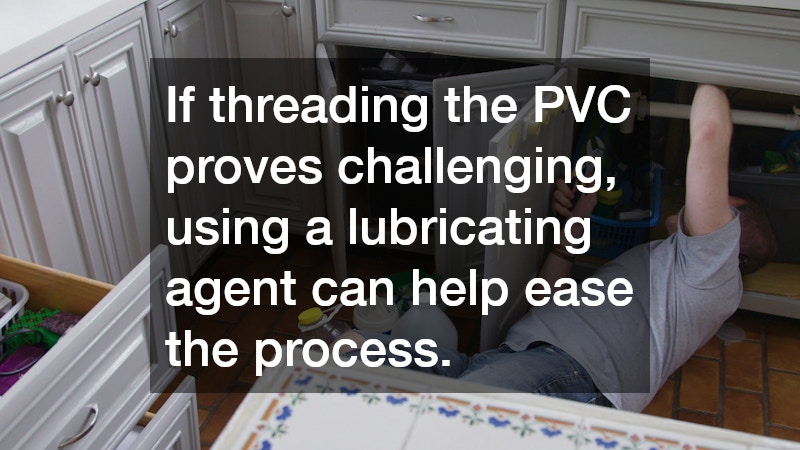PVC conduit and fittings are essential components in a variety of plumbing and electrical applications. These materials are prized for their durability, versatility, and ease of use. Understanding the different types of PVC available and their specific uses is crucial for anyone looking to make a robust, reliable connection.
There are many grades and styles of PVC, each designed to withstand certain environmental conditions and pressures. Knowing which PVC to choose ensures the longevity of your connections.
The most common types of PVC are schedule 40 and schedule 80. Schedule 40 PVC is typically used in residential settings because it’s cost-effective and easier to handle. On the other hand, schedule 80 PVC is used in commercial and high-pressure applications due to its thicker walls. Understanding the differences between these types can help you choose the right one for your needs. Selecting the correct PVC conduit and fittings for your project is crucial for ensuring safety and efficiency.
PVC fittings come in many shapes and sizes, including elbows, tees, couplings, and adapters. Each type has a distinct purpose and can affect the direction or flow of the conduit. Properly identifying these fittings is vital to ensuring a successful threaded PVC connection. Learning how to effectively use these components allows for more complex and customizable installations. Mastering PVC conduit and fittings sets the groundwork for creating strong, secure connections.
Tools and Materials Needed
Before you begin creating a threaded PVC connection, it’s essential to gather the necessary tools and materials. Having everything you need on hand will streamline the process and help eliminate potential mistakes. The basic tools required include a PVC pipe cutter, a utility knife, and an adjustable wrench. It’s also important to have PVC thread sealant or Teflon tape to ensure the connection is watertight. Consistently using the right tools can significantly affect the outcome and durability of your connection.
Additionally, a file or sandpaper is useful for deburring the edges of cut PVC pipes. Deburring smooths out rough edges that could potentially interfere with the threaded connection. For larger projects, you may need a PVC pipe vise, which holds the pipe steady as you work. Having a durable and stable work surface can improve precision and ease of installation. These preparations lay the foundation for a high-quality threaded connection.
If you’re working with electrical PVC conduit and fittings, a conduit bender might be necessary to navigate turns and corners. For plumbing, a fitting brush can help clean out any residue from the inside of the fittings. When working on projects exposed to the elements, a UV-resistant paint or protective coating may be necessary to shield the PVC from sun damage. These additional materials can extend the life and functionality of your connections. Assembling tools and materials beforehand promotes efficient and successful project execution.
Step-by-Step Guide to Making a Threaded PVC Connection
To start making a threaded PVC connection, you must first measure and cut the PVC to the desired length. Using a PVC pipe cutter ensures a clean cut, which is essential for creating a tight seal. After cutting, smooth out the edge with a file or sandpaper to remove any burrs or rough spots. This step is critical because uneven surfaces can weaken the threads and compromise the connection’s integrity. Carefully handling each cut ensures a better fitting and a stronger, leak-free union.
Once the pipe is prepped, you can begin threading the end by applying your choice of thread sealant or Teflon tape. Wrap the tape clockwise around the threads, covering them fully but not excessively. This will prevent leaks and ensure a snug fit when you join the two pieces. Next, thread the PVC fitting onto the pipe using your hands to start, then tighten it with an adjustable wrench. Ensure it’s secure but avoid overtightening, which can cause cracks or distortions in the PVC.
The last step involves testing the connection for leaks or weaknesses. For plumbing applications, this means running water through the pipe to ensure there are no leaks. For electrical conduit, you should verify that the wires are safely enclosed and secure within the conduit. Routine inspections should be done to ensure the integrity of the connection over time. Following these steps methodically will result in a reliable and robust threaded PVC connection.
Common Troubleshooting Tips
Despite taking every precaution, issues can arise with PVC connections. One common problem is leaks, which are often caused by improperly applied sealant or insufficient thread engagement. Retightening the fitting or reapplying sealant can often resolve this issue. If leaks persist, inspect the PVC for potential cracks or deformations. Regular maintenance can help detect issues early before they escalate into significant problems.
Another concern is the warping of the PVC, particularly in areas exposed to frequent temperature changes or sunlight. PVC conduit and fittings may expand or contract, causing stress on the connection. To mitigate this issue, ensure the PVC is correctly supported, and use expansion couplings if necessary. Proper installation techniques can significantly reduce the risk of warping. Regular inspection and adjustments help maintain optimum connection performance.
If threading the PVC proves challenging, using a lubricating agent can help ease the process. Always ensure that the correct threading tools are used to avoid damaging the threads. If cross-threading occurs, the entire fitting may need replacement to ensure a proper seal. Ensuring that everything lines up correctly during initial assembly can prevent cross-threading. Applying these troubleshooting tips can prolong the life of your PVC installations.
Creating a threaded PVC connection is a crucial skill for various applications in both plumbing and electrical projects. Understanding the types of PVC conduit and fittings available enables you to make informed selections for your specific needs. Gathering the right tools and materials beforehand ensures the process runs smoothly. Following each step meticulously will result in a secure and reliable connection. Mastering these skills benefits both small home projects and larger commercial installations.




